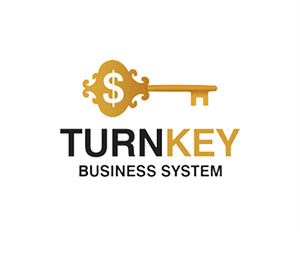Binary Options vs. Traditional Stock Trading: Key Differences and Benefits

Binary Options vs. Traditional Stock Trading: Key Differences and Benefits
Binary options and traditional stock trading are two popular investment avenues, each with its own unique characteristics, risks, and rewards.
While both involve financial markets, they cater to different types of traders and strategies.
Understanding the key differences between these two methods is crucial for investors looking to make informed decisions about their trading activities.
Below, we explore the distinctions and benefits of binary options versus traditional stock trading.
While both involve financial markets, they cater to different types of traders and strategies.
Understanding the key differences between these two methods is crucial for investors looking to make informed decisions about their trading activities.
Below, we explore the distinctions and benefits of binary options versus traditional stock trading.

Binary Options vs. Traditional Stock Trading: Key Differences and Benefits
1. Nature of the Investment
Binary Options:Binary options are a type of derivative trading where investors predict whether the price of an asset (e.g., stocks, currencies, commodities) will rise or fall within a specified time frame.
The outcome is binary: you either win a fixed payout or lose your initial investment.
Trades are typically short-term, ranging from minutes to hours.
Traditional Stock Trading:
Involves buying and selling shares of publicly traded companies on stock exchanges like the NYSE or NASDAQ.
Investors profit from price appreciation or dividends over time.
Positions can be held for short-term gains (day trading) or long-term investments (buy-and-hold strategies).
2. Risk and Reward Structure
Binary Options:Fixed risk and reward: Traders know the potential profit or loss upfront before entering a trade.
High-risk, high-reward: While payouts can be lucrative, the probability of losing the entire investment is significant.
Suitable for traders comfortable with all-or-nothing outcomes.
Traditional Stock Trading:
Variable risk and reward: Profits depend on market movements, which can be unpredictable.
Losses are limited to the amount invested, but gains can be unlimited if the stock price rises significantly.
Offers more flexibility for managing risk through stop-loss orders and diversification.
3. Time Horizon
Binary Options:Designed for short-term trading, often expiring in minutes, hours, or days.
Ideal for traders seeking quick results and those who prefer defined timeframes.
Traditional Stock Trading:
Can accommodate both short-term and long-term strategies.
Day traders focus on intraday price movements, while long-term investors aim for gradual wealth accumulation over years.
4. Complexity and Accessibility
Binary Options:Simple and straightforward: Traders only need to predict whether the asset’s price will go up or down.
Accessible to beginners due to its ease of use and minimal prerequisites.
Often criticized for being overly speculative and lacking transparency.
Traditional Stock Trading:
Requires a deeper understanding of market fundamentals, technical analysis, and economic indicators.
More suitable for traders willing to invest time in research and education.
Offers greater transparency as stock prices are influenced by publicly available information.
5. Regulatory Environment
Binary Options:Heavily scrutinized and banned in some countries (e.g., the European Union and the United States) due to concerns about fraud and lack of regulation.
Reputable brokers are rare, making it essential to choose platforms carefully.
Traditional Stock Trading:
Highly regulated by authorities such as the SEC (U.S.) and FCA (UK), ensuring fair practices and investor protection.
Operates within established frameworks, providing a safer environment for traders.
6. Costs and Fees
Binary Options:Typically involve no direct fees or commissions; brokers earn through spreads or losses incurred by traders.
Hidden costs may arise from unregulated platforms or unfair pricing models.
Traditional Stock Trading:
Includes brokerage fees, commissions, and other transaction costs.
Some platforms offer commission-free trading, but additional charges like margin interest or account maintenance fees may apply.
7. Market Influence
Binary Options:Prices are determined by the broker, who may act as a counterparty to trades.
Limited influence from external factors since payouts depend solely on the asset’s direction, not the magnitude of movement.
Traditional Stock Trading:
Prices are driven by supply and demand, corporate performance, economic data, and geopolitical events.
Reflects the broader market sentiment and real-world developments.
Benefits of Binary Options
Simplicity: Easy to understand, even for beginners.Defined Risk: Known potential loss and gain before entering a trade.
Short-Term Opportunities: Quick results appeal to traders looking for fast-paced action.
Diverse Assets: Trade stocks, currencies, commodities, and indices without owning the underlying asset.
Benefits of Traditional Stock Trading
Long-Term Growth Potential: Ability to build wealth over time through capital appreciation and dividends.Flexibility: Accommodates various strategies, from day trading to retirement planning.
Transparency: Prices reflect real-world data and market conditions.
Regulatory Protection: Operates within well-established legal frameworks, offering greater security.
Which is Right for You?
The choice between binary options and traditional stock trading depends on your goals, risk tolerance, and experience level:Binary Options: Best suited for traders who prefer simplicity, short-term bets, and are comfortable with high-risk scenarios.
Traditional Stock Trading: Ideal for those seeking long-term growth, diversification, and a deeper engagement with financial markets.














Report
My comments